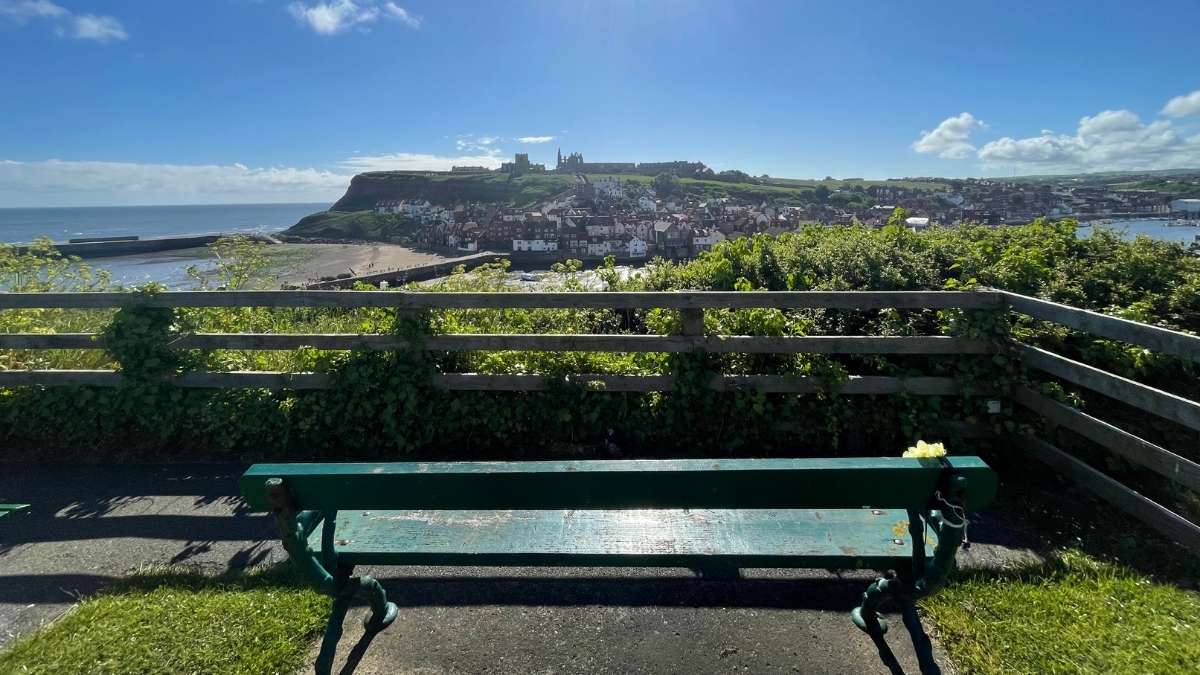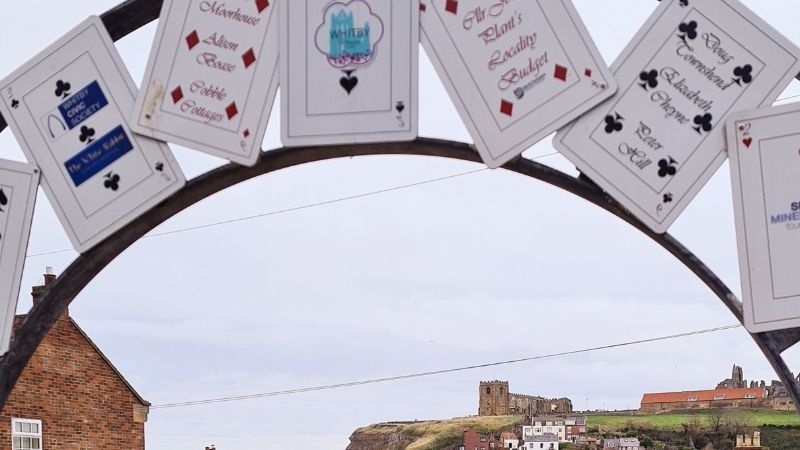The town of Whitby has connections to and has been associated with many famous people over the years. In this article, we explore the famous people of Whitby.
From great explorers to poets and vampires, Whitby has had its fair share of famous people. These connections are why many people travel from around the world to visit this seaside town. Here we explore the famous people of Whitby.
Captain Cook
Captain James Cook undertook three great voyages for the Royal Navy and secured his reputation as one of the greatest maritime explorers. Captain James Cook is famous for his discovery of Australia. He was a British explorer, navigator, cartographer, captain in the British Royal Navy and most likely one of Whitby’s most famous people.
FREE Whitby Mini-Guide
"Get the best from your stay in Whitby." - Everything you need to know about Whitby into a free mini-guide!

He was born in Middlesbrough to James, a Scottish farm labourer. His early childhood home was spent at Airey Holmes farm, where the farmer paid for him to attend their local school. After four years on the farm with his father, he reached 16 and moved to Staithes to complete an apprenticeship as a shopkeeper and haberdasher. Here many people believed that Captain Cook discovered his passion and love for the sea.
After finishing his apprenticeship, he sailed the Baltic trade routes until he passed his exams in 1752. He was skilled and was quickly offered command of collier brig, Friendship, in 1755. Not even a whole month later, Cook enlisted with the Royal Navy. He developed a reputation for cartographic and topographic skills during the Seven Years’ War. He created the map used to help General Wolfe mount a surprise attack at the Battle of the Plains of Abraham in 1759. He then mapped and surveyed the coastline, rocks and hidden dangers in the region of Newfoundland. These maps were used for the next 200 years. Cook is also known for conducting an astronomical observation; on 5 August 1766. He measured the eclipse of the sun with longitude taken at Newfoundland and cross-referenced with England.

Today you can visit the Captain Cook memorial monument in Whitby. It is a 7ft 6inch bronze statue to commemorate the men who built the four ships that Cook used on his voyages. The ships were the Endeavour, Resolution, Adventure, and Discovery. The statue is situated in People’s Park on the West Cliff and overlooks Whitby Harbour. You can also visit the Captain Cook Memorial Museum inside John Walker’s house, where it is believed Cook lived or take a trip out on the Captain Cook Experience Cruise from the harbour. This ship takes you out to sea to hear stories about the life and adventures of Captain Cook, plus you get a fantastic view of Whitby’s coastline.
The Scoresbys
The Scoresbys Father and Son were both named William Scoresby. William Scoresby Senior was born in Pickering in 1760. He was a labourer before going out to sea. In 1785 he joined the crew of the Henrietta, which was a Greenland whaler; six years later, he became its master. Whitby, at the time, was an epicentre of the British whaling industry. Two of William Scoresby Senior’s most notable achievements are the invention of the crow’s nest and the record for sailing the furthest North any ship had ever sailed. He reached latitude 80’30’, just 500 miles from the North Pole.

William Scoresby Junior was hardworking and intelligent; at just 17, he had already shared in his father’s triumph at sea aboard the Henrietta. He was then elected to the Wernerian Natural History Society for his contributions to scientific knowledge of the Arctic. By 22, he married a shipbroker’s daughter and took the helm of his father’s ship, the Resolution.
He established that the Polar Ocean had a warmer temperature at depth compared to the surface in 1813; this was one of his many studies of the region into the early 1820s. Unfortunately, while he was away at sea, William’s wife, Elizabeth, died. This news led him to retire from his captaincy and turn to the cloth. After this, he published numerous studies, including An Account of the Arctic Regions and Northern Whale Fishery, Journal of a Voyage to the Northern Whale Fishery, including Research and Discoveries on the Eastern Coast of Greenland. You can learn more about the Scoresby families and whaling history in Whitby here.
Bram Stoker
Bram Stoker got much of his inspiration for the novel Dracula whilst staying in Whitby. As a result, the town greatly impacted the story of Dracula, with nods to Whitby throughout the book. Stoker was introduced to Whitby by a friend in 1890. He stayed at number 6 Royal Crescent, one of the town’s most prestigious addresses at the time. Standing outside the Royal Hotel on the West Cliff today, you can get a similar view as Stoker 125 years ago. It’s easy to relate the novel’s descriptions to Whitby’s beautiful scenery.

Stoker discovered the star of his novel during a trip to Whitby on the 8th of August 1890. He visited the Harbourside public library, which is now the Quayside fish and chip restaurant. He read a book called An Account of the Principalities of Wallachia and Moldova by William Wilkinson, which mentioned a 15th-century prince named Vlad Tepes (Vlad the Impaler) who impaled his enemies on wooden stakes. Vlad was also known as Dracula – the ‘son of the dragon’. In Wallachian language, Dracula interestingly means Devil.
The 199 steps are mentioned in the novel; In the form of a black dog, Dracula is shown to run up the steps after his ship is wrecked on Tate Hill Sands.

Spare some time to visit the Dracula Experience whilst you are in Whitby. Scary and a lot of fun, this experience isn’t for the fainthearted. You can also visit Bram Stoker’s memorial bench on Khyber Pass. It is the furthest bench that can be seen from the Whale Bone Arch.
Lewis Carroll
In the summer of 1854, Lewis Carroll first travelled to Whitby and stayed with some students and a tutor for around two months to study and lecture about mathematics. He then visited the town seven times, staying at 5 East Terrace on six occasions. Whitby Civic Society has installed a blue plaque to commemorate this fascinating fact.

The Whitby Gazette printed one of his early stories, The Lady of the Ladle. Carroll began using his pen name, Lewis Carroll, two years later. He then met the daughter of the Dean of his college, Alice Liddell. In 1865 Alice in Wonderland was published. The sequel, Alice Through the Looking Glass, was printed in 1871. Whitby is believed to be the inspiration for The Walrus and the Carpenter, the narrative poem that appears in The Looking Glass.
Today you can remember Lewis Carroll at the themed garden in Whitby. Curiouser and curiouser! – Get directions here.
Charles Dickens
The connection between Charles Dickens and Whitby begins with the dedication in the novel Domeby and Sons, serialised monthly between 1846 and 1848. Whilst visiting North Yorkshire, Dickens stayed with the Marquis and Marchioness at Mulgrave Castle, where he found inspiration for characters and places in several of his novels.

The Lord of Normanby invited Dickens to stay at Mulgrave Castle after the funeral of Mr Smithson in 1844. The pair travelled the countryside around Whitby and dined at the White Horse and Griffin. Dickens loved Whitby and encouraged many people to visit, such as his friend Wilkie Collins 1861, another successful author.
St Hilda
St Hilda’s name is dotted all around Whitby. St Hilda of Whitby, or Hild, the Anglo Saxon name that means battle, was born in 614AD into the Royal house of Northumbria. She was a Christian saint and the founding abbess of the monastery at Whitby in 657 AD.

Under the guidance of St Hilda, Whitby Abbey became an influential religious house and centre for education. Many great names of the early Church were established at Whitby, such as John of Beverley, the bishop of Hexham, and Wilfred, the great bishop of York, who were canonised. St Hilda was calm, wise and level-headed. She nurtured the local community around the Abbey and has been described as a mother figure. You can still visit the ruins of Whitby Abbey today and you can learn more about St Hilda here.
Caedmon
Caedmon was the first known English poet knew by name. He was Northumbrian and cared for the animals at the double monastery of Streonæshalch, known today as Whitby Abbey. It is said that he learnt to compose poetry during a dream during the abbacy of St Hilda; she encouraged his talent.

Caedmon’s Hymn
Now the words of the Father of Glory must honour the guardian of heaven, the might of the architect, and the minds of his purpose,
the work of the Father of Glory – as He is the
beginning of wonders (and He)
established, the eternal Lord,
He first created for the children of Earth
Heaven as a roof, the holy creator
Then the middle-earth, the guardian of mankind,
the eternal Lord, afterwards appointed,
for men among the Lands, the Lord Almighty.
The poem is one of the earliest attested examples of Old English. Learn more about Caedmon here.
Frank Meadow Sutcliffe
Francis Meadow Sutcliffe was a pioneering photographic artist born in Headingley, Leeds, in 1853. His raw and thought-provoking images had him named ‘pictorial Boswell of Whitby’. It is from Sutcliffe’s photography that we can get a real glimpse into the daily lives of the people who lived and worked in Whitby during the Victorian era. From their local life in a busy harbour town to children simply playing in the water. His work is captivating and marvellous to look back into the people’s real lives in the places we know so well.

Sutcliffe’s father, Thomas Sutcliffe, was a painter, and Sutcliffe was the oldest of eight children meaning he often slept in his father’s studio. He had an elementary education at a dame school where he found a love for the new technology of photography there. In 1870 he moved to Whitby with his family; sadly, his father died a year later. At 18, Sutcliffe became head of the family.

Sutcliffe established a portrait business out of his Skinner Street studio. He photographed the people around him simply going about their day and built an incredible body of work. At 70, he became the curator of the Whitby Gallery and Museum; he held this post until his death in 1941 at 87. You can view and buy a selection of his images here.
Beth Mead

The Lionesses wowed the world during the Euros 2022, but before Beth Mead was the first woman to score a hat-trick for England at Wembley, she worked at a local pub in Staithes. Beth was born in Hinderwell, a small village near Whitby. She plays for Arsenal Women and England’s Women’s team. The Lionesses claimed their first major trophy in their history, with Mead receiving the Golden Boot after scoring six times and the player of the tournament award.
How many of the famous people in this article did you know? Let us know in the comments.













